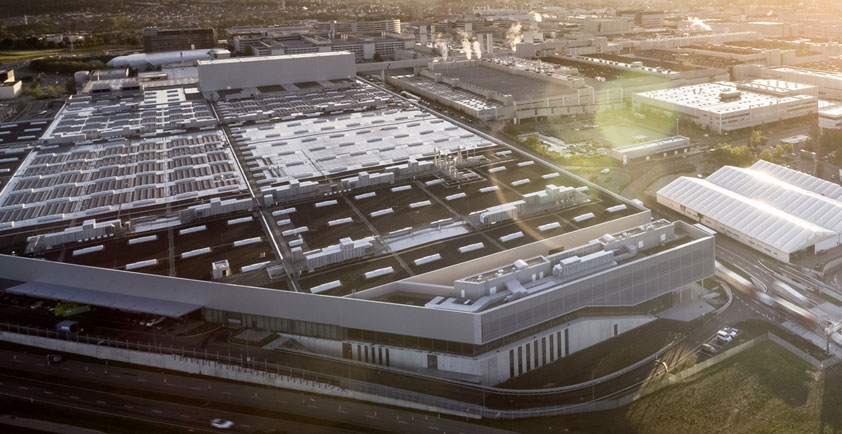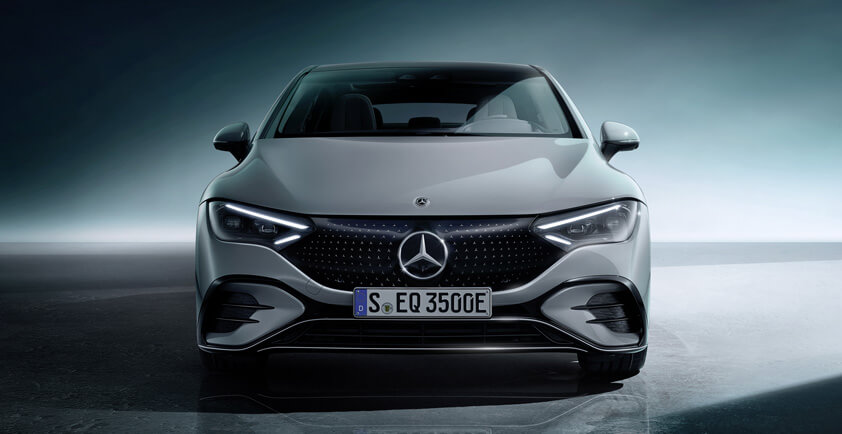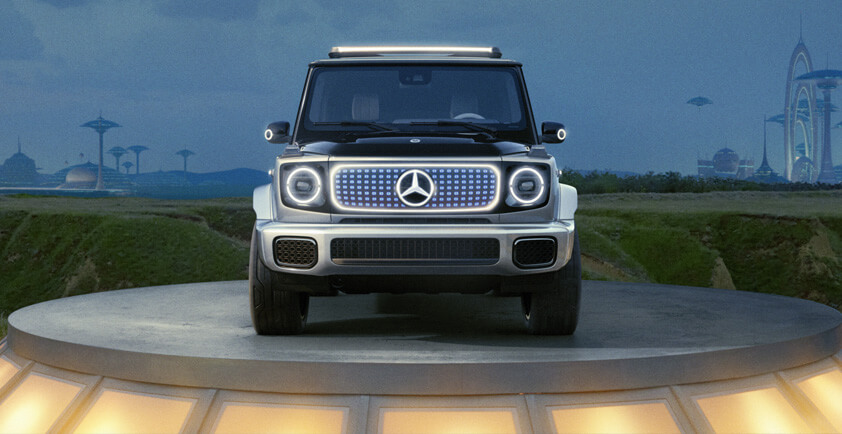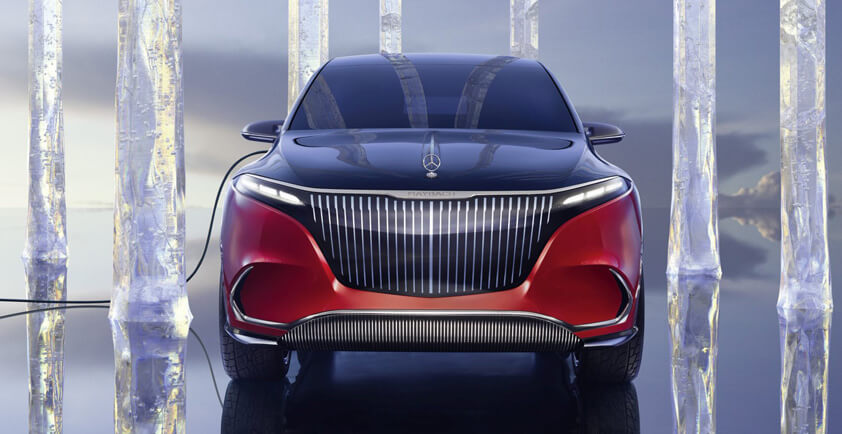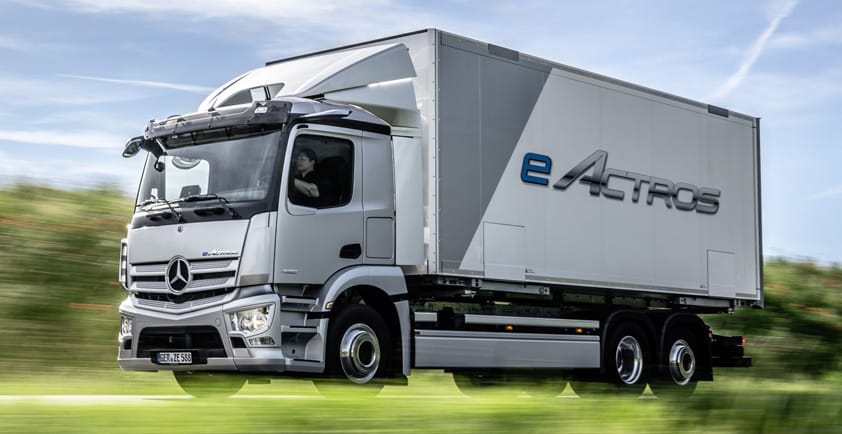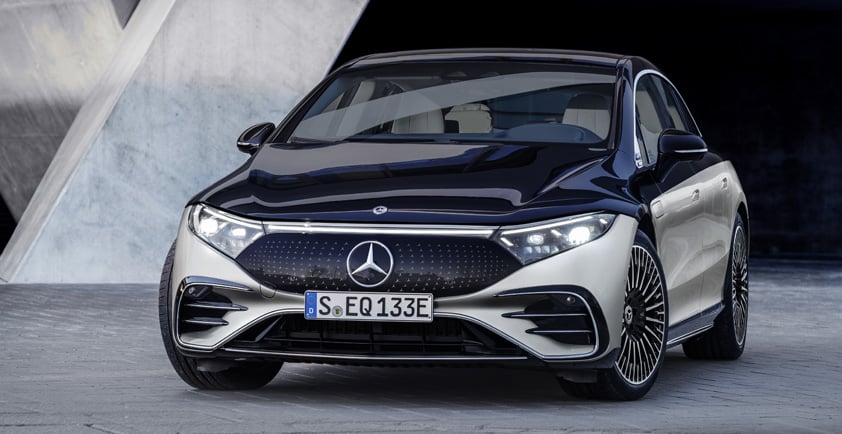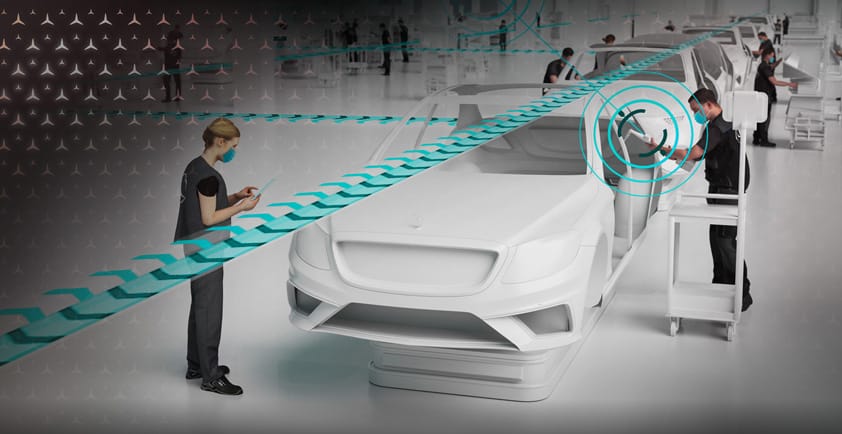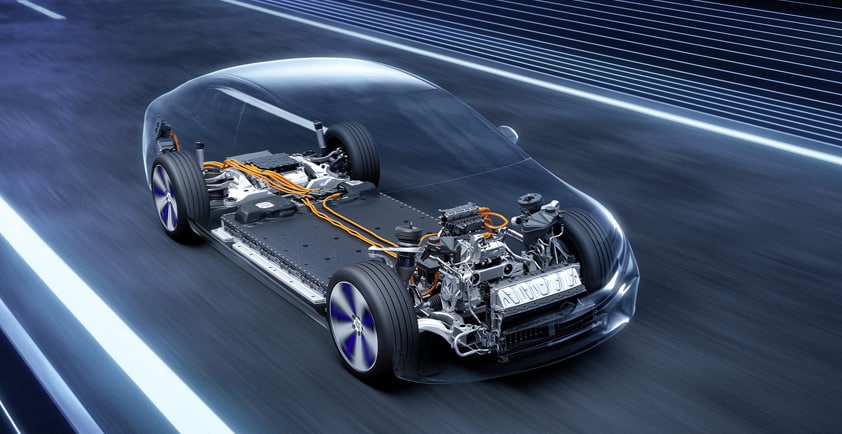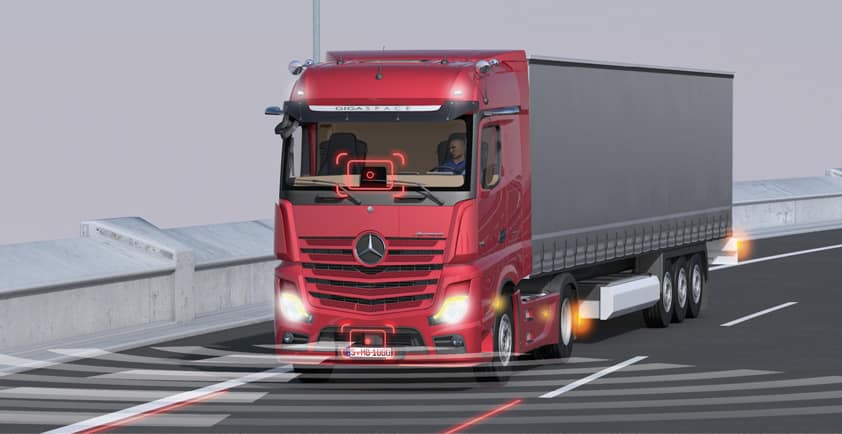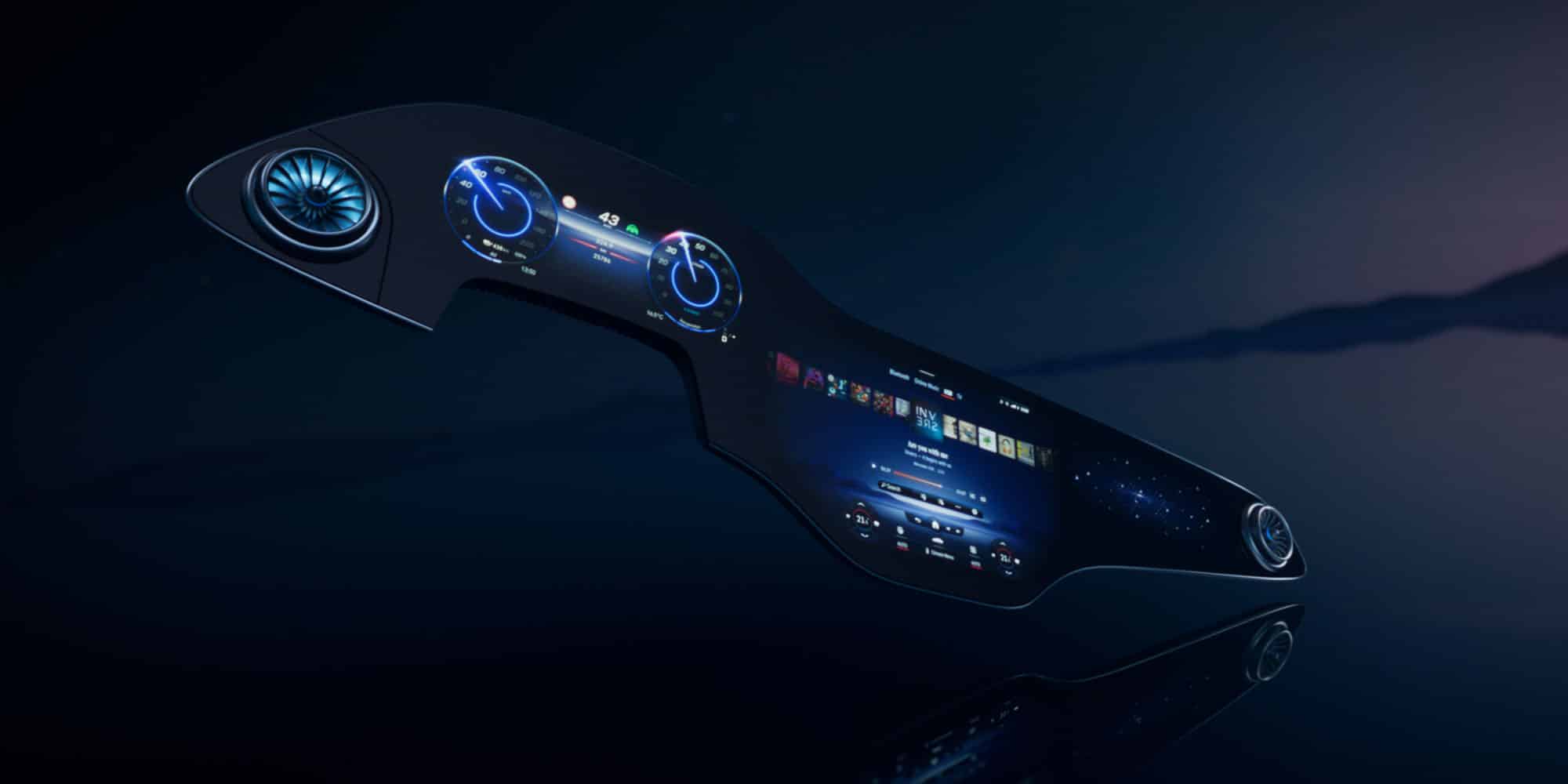
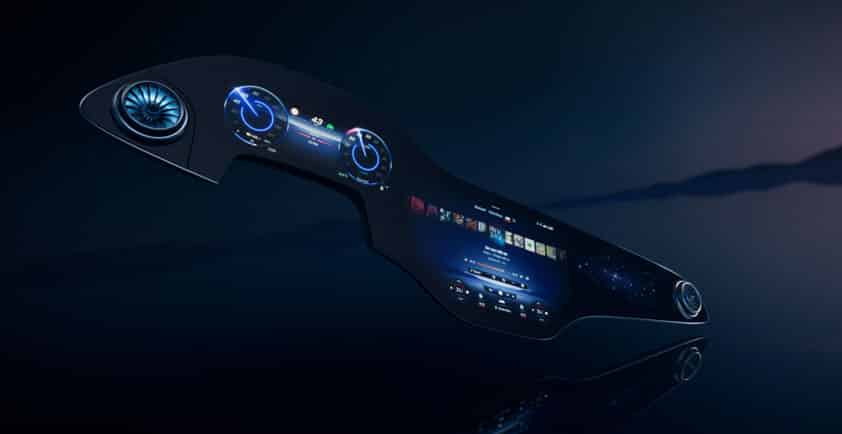
EQS WITH UNIQUE MBUX HYPERSCREEN: THE BIG IN-CAR CINEMA: AN ASSISTANT FOR THE DRIVER AND FRONT PASSENGER WHO IS CONSTANTLY LEARNING, THANKS TO ARTIFICIAL INTELLIGENCE
Visually impressive, radically easy to operate and extremely eager to learn: the MBUX Hyperscreen is one of the highlights in the EQS. It represents the emotional intelligence of the all-electric upper-class model: The large, curved screen unit stretches almost the entire width from the left to the right A-pillar. In addition to its sheer size, the high-quality, detail-loving design also provides a "wow" effect. This aesthetic high-tech look is the emotional dimension of the MBUX hyperscreen. Added to this is artificial intelligence (AI): With software capable of learning, the display and operating concept adapts completely to its user and makes personalised suggestions for numerous infotainment, comfort and vehicle functions. Thanks to the so-called zero layer, the user does not have to scroll through submenus or give voice commands. The most important applications are always offered in a situational and contextual way at the top level in view. In this way, numerous operating steps are taken away from the EQS driver. And not only him: The MBUX Hyperscreen is also an attentive assistant for the passenger. It receives its own display and operating area.
MBUX (Mercedes-Benz User Experience) has radically simplified the operation of a Mercedes-Benz. Unveiled in 2018 in the current A-Class, there are now more than 1.8 million Mercedes-Benz passenger cars equipped with it on the roads worldwide. The Van division is also relying on MBUX. A few months ago the second generation of this learn-capable system debuted in the new S-Class. The next big step now follows in the form of the new EQS and the optionally available MBUX Hyperscreen.
“With our MBUX Hyperscreen, a design vision becomes reality” says Gorden Wagener, Chief Design Officer Daimler Group. “We merge technology with design in a fascinating way that offers the customer unprecedented ease of use. We love simplicity, we have reached a new level of MBUX.”
"The MBUX Hyperscreen is both the brain and nervous system of the car", says Sajjad Khan, Member of the Board of Management of Mercedes-Benz AG and CTO. "The MBUX Hyperscreen continually gets to know the customer better and delivers a tailored, personalised infotainment and operating offering before the occupant even has to click or scroll anywhere."
Electrifying appearance with emotional visualization
The MBUX Hyperscreen is an example of digital/analogue design fusion: several displays appear to blend seamlessly, resulting in an impressive, curved screen band. Analogue air vents are integrated into this large digital surface to connect the digital and physical world.
The MBUX Hyperscreen is surrounded by a continuous plastic front frame. Its visible part is painted in an elaborate three-layer process in "Silver Shadow". This coating system achieves a particularly high-quality surface impression due to extremely thin intermediate layers. The integrated ambient lighting installed in the lower part of the MBUX Hyperscreen makes the display unit appear to float on the instrument panel.
The passenger also has its own display and operating area, which makes travel more pleasant and entertaining. With up to seven profiles, it is possible to customize the content. However, the entertainment functions of the passenger display are only available during the journey within the framework of the country-specific legal regulations. If the passenger seat is not occupied, the screen becomes a digital decorative part. In this case, animated stars, i.e. the Mercedes-Benz Pattern, are displayed.
For a particularly brilliant image, OLED technology is used in central and passenger displays. This is where the individual image points are self-luminous; non-controlled image pixels remain switched off, which means that they appear deep black. The active OLED pixels, on the other hand, radiate with high color brilliance, resulting in high contrast values, regardless of the angle of view and the lighting conditions.
This electrifying display appearance goes hand in hand with emotionally appealing visualisation. All the graphics are styled in a new blue/orange colour scheme throughout. The classic cockpit display with two circular instruments has been reinterpreted with a digital laser sword in a glass lens.
Thanks to its clear screen design with anchor points, the MBUX Hyperscreen is intuitive and easy to operate. An example of this is the display style EV mode. Important functions of the electric drive such as boost or recuperation are visualized in a new way, with a spatially moving clasp, and thus made tangible. A lens-shaped object moves between these clamps. It follows gravity and thus depicts the G-Force forces impressively and emotionally.
Personalised suggestions with the aid of artificial intelligence
Infotainment systems offer numerous and comprehensive functions. Several operating steps are often required to control them. In order to further reduce these interaction steps, Mercedes-Benz has developed a user interface with context-sensitive awareness with the help of artificial intelligence.
The MBUX system proactively displays the right functions at the right time for the user, supported by artificial intelligence (see below for examples). The context-sensitive awareness is constantly optimised by changes in the surroundings and user behaviour. The so-called zero-layer provides the user at the top level of the MBUX information architecture with dynamic, aggregated content from the entire MBUX system and related services.
Mercedes-Benz has investigated the usage behaviour of the first MBUX generation. Most of the use cases fall in the Navigation, Radio/Media and Telephony categories the navigation application is therefore always at the center of the screen unit with full functionality.
Over 20 further functions – from the active massage programme through the birthday reminder, to the suggestion for the to-do list – are automatically offered with the aid of artificial intelligence when they are relevant to the customer. "Magic Modules" is the in-house name the developers have given to these suggestion modules, which are shown on the zero-layer.
Here are four use cases. The user can accept or reject the respective suggestion with just one click:
> If you always call a certain friend on the way home on Tuesday evenings, you will be asked to make a corresponding call on that day of the week and at this time of day. A business card with its contact information appears, and - if stored - its image appears. All MBUX suggestions are linked to the user's profile. If someone else drives the EQS on a Tuesday night, this recommendation is not made – or there is another, depending on the preferences of the other user.
> If the EQS driver regularly uses the massage function according to the hot stone principle in winter, the system learns and automatically suggests the comfort function in wintry temperatures.
> If the user regularly switches on the heating of the steering wheel and other surfaces for seat heating, for example, this is suggested to him as soon as he presses the seat heating.
> The chassis of the EQS can be lifted to provide more ground clearance. A useful function for steep garage entrances or sleep policemen. MBUX remembers the GPS position at which the user made use of the "Vehicle Lift-Up" function. If the vehicle approaches the GPS position again, MBUX independently proposes to lift the EQS.
Interesting facts & figures
With the MBUX Hyperscreen, several displays appear to merge seamlessly, resulting in an impressive 141-centimetre wide and curved screen band. The area that passengers can experience is 2,432.11 cm2.
The large glass cover display is curved three-dimensionally in the moulding process at temperatures of approx. 650°C. This process allows a distortion-free view of the display unit across the entire width of the vehicle, irrespective of the display cover radius.
To get to the most important applications, the user must scroll through 0 menu levels. That's why Mercedes-Benz calls this zero layer.
There are a total of 12 actuators beneath the touchscreen for haptic feedback during operation. If the finger touches certain points there, they trigger a tangible vibration in the cover plate.
Two coatings of the cover plate reduce reflections and make cleaning easier. The curved glass itself consists of particularly scratch-resistant aluminium silicate.
The safety measures include predetermined breaking points alongside the side outlet openings as well as five holders which can yield in a targeted manner in a crash thanks to their honeycomb structure.
8 CPU cores, 24-gigabyte RAM and 46.4 GB per second RAM memory bandwidth are some of the MBUX technical specifications.
With the measurement data of a 1 multifunction camera and also 1 light sensor the brightness of the screen is adapted to the ambient conditions.
With up to seven profiles, the display section can be individualised for the front passenger.
